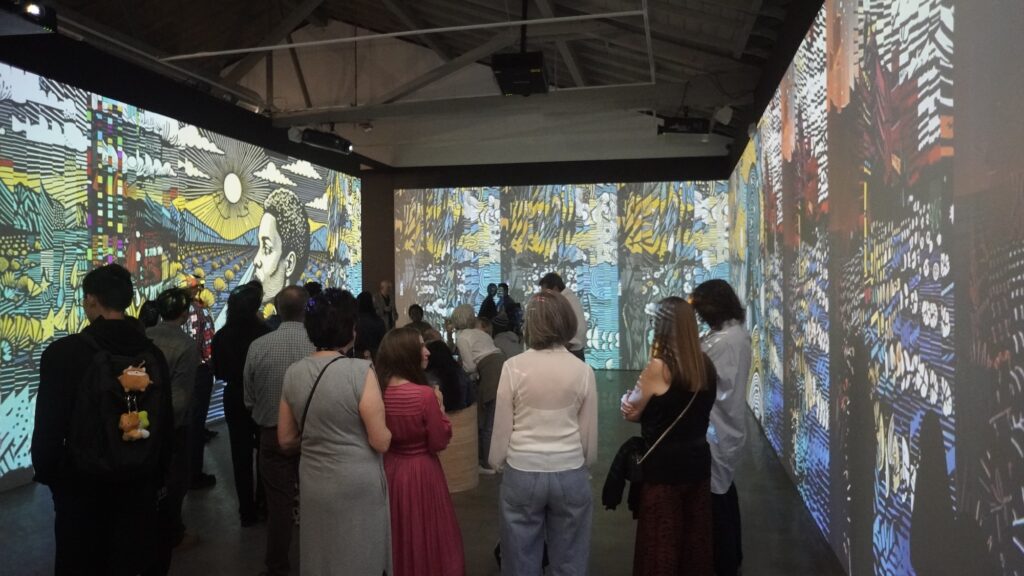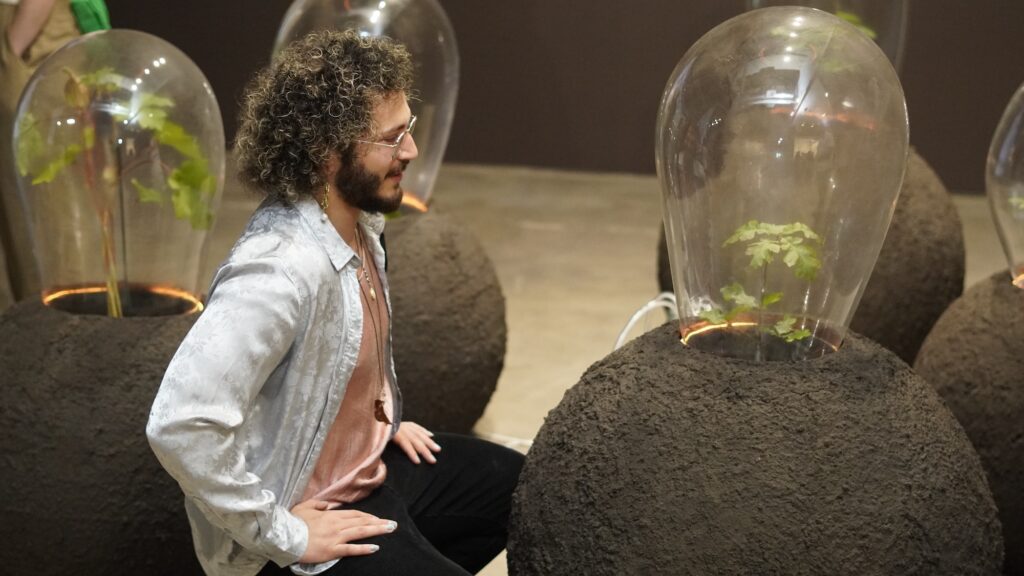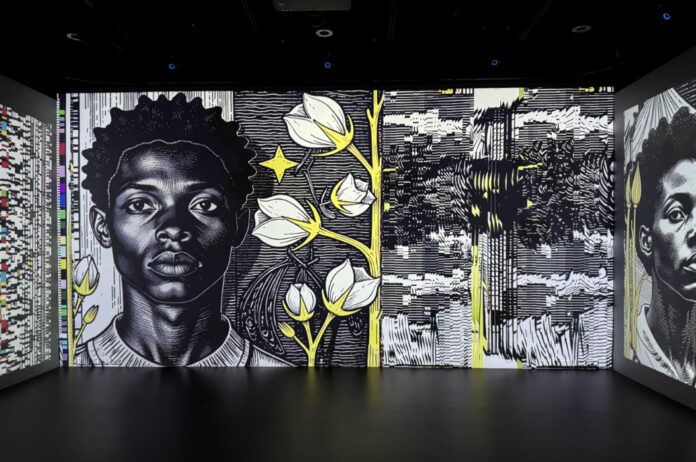For many of us, the daily use of technology leaves a trail of data, wherein the terms of consent are frequently veiled, implicit, and monetized. Curated by Elizabeth Thomas, Stephanie Dinkins’ exhibition “Data Trust” (through March 22, 2026, at the San José Institute of Contemporary Art) reimagines an equitable relationship between technology and historically marginalized communities—whose information and representation have often been lacking, inaccurate, and manipulated. In the exhibition, Dinkins presents an impressive array of sculptures, interactive installations, image-based works, and digital tools that consider how stories are collected and passed-on through cultural, biological, and digital systems.
Starting with the clever title, Dinkins invites viewers to balance the seemingly sterile and objective idea of data alongside ideas of trust, where we weigh more ambiguous social and intuitive relationships and feelings. Dinkins also flips the idea of a trust, as a legal entity that protects assets (usually financial), for future generations or beneficiaries. As Dinkins suggests data as something we can have a relationship with, or a cache to be protected, both are rooted in a user’s confidence in the system’s integrity. As a result, we must ask how our data is obtained; who, or what, controls or owns it; and how they, or it, are held accountable.
The backbone of many of the exhibition’s works lies in the process of collecting viewers’ stories; the artist presents several physically and socially interactive platforms for “gifting” these stories to her AI’s dataset. In Dinkins’ relatively simple app “The Stories We Tell Our Machines (TSWTOM)” the artist poses questions to users about dreams, cultural representation, memories, and more.

Towards the gallery entrance Dinkins frames story-telling through the many layers of cultural symbolism, history, and emerging bioscience. In “Data Trust: Living Archive” (2025), small okra plants and California black oak trees grow in a carefully designed biosphere of five soil encrusted orbs with blown-glass domes, all connected through an irrigation system. Underscoring this system of biological growth, the small okra plants and oak trees suggest ways that the pods and acorns nourished Black and Indigenous communities. Additionally, the plants and trees stand as cultural symbols that tell the stories of migration and resilience across geography and time.
Provocatively, the plants’ soil is said to contain story-infused bacterial DNA. The exhibition provides very little explanation about Dinkins’ scientific process, and it’s admittedly a challenge to get a grip on what this actually is and how it works. While further explanation about the process could provide some transparency, its absence leaves me to imagine what specific stories Dinkins has infused into the DNA and the way that plant DNA can be a vehicle, proxy, or parallel for cultural and migratory histories.

Perhaps most importantly, Dinkins leaves us to assess the degree to which we desire, or can appropriately ask, the artist for technical and cultural legibility. Here, Dinkins implicates herself in her relationship with her viewers and asks us to draw our parameters for trusting the artist’s execution of the unseen elements.
Moving from organic to digital systems, Dinkins presents her five-channel video installation “Data Trust” (2025) and the single-channel video “The Stories We Tell Our Machines” (2025). With data culled from Dinkins’ app, the artist uses her AI to sequence and represent the text, image, or audio stories that users have “gifted” her. Featuring imagery that centers Black communities, histories, and stories the work montages woodblock-like stylized imagery with bold curved lines, simplified shapes, and saturated-color graphics. As an AI work that will continue to evolve as new viewers contribute stories, the work’s discordant sequence embraces process, rather than verisimilitude and finished product.
In 2015, filmmaker Chris Milk proposed that Virtual Reality could be an empathy machine. As the technological spotlight has shifted to AI, we are now seeing empathy engines alongside the cultural phenomenon of weaponized empathy. While it’s difficult to not advocate for greater empathy in the world, within a media landscape of trompe-l’oeil AI Gen and performative affinity, questions of reality, truth, and trust have become paramount.
The resulting questions are not about how we can trust the technology we already have, but about how we can create technological systems that are themselves trustworthy. How do we move from the obfuscation of who controls or manipulates “Big Data” to making our data collection systems intentionally nameable, intimate, and responsible?
DATA TRUST through March 22, 2026, at the San José Institute of Contemporary Art. More info here.





